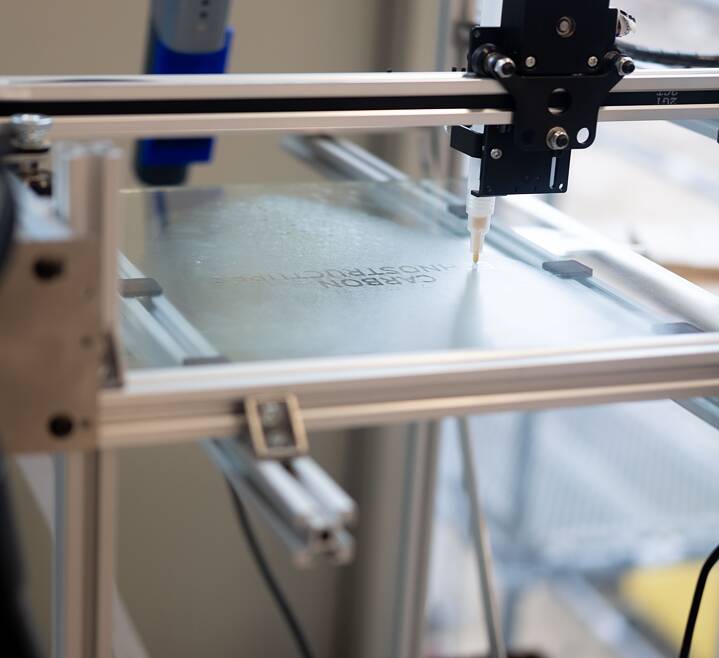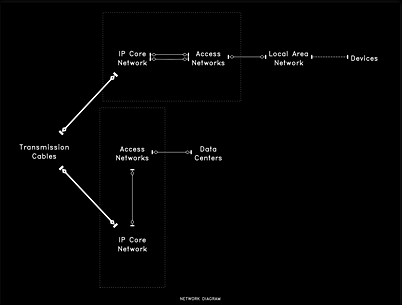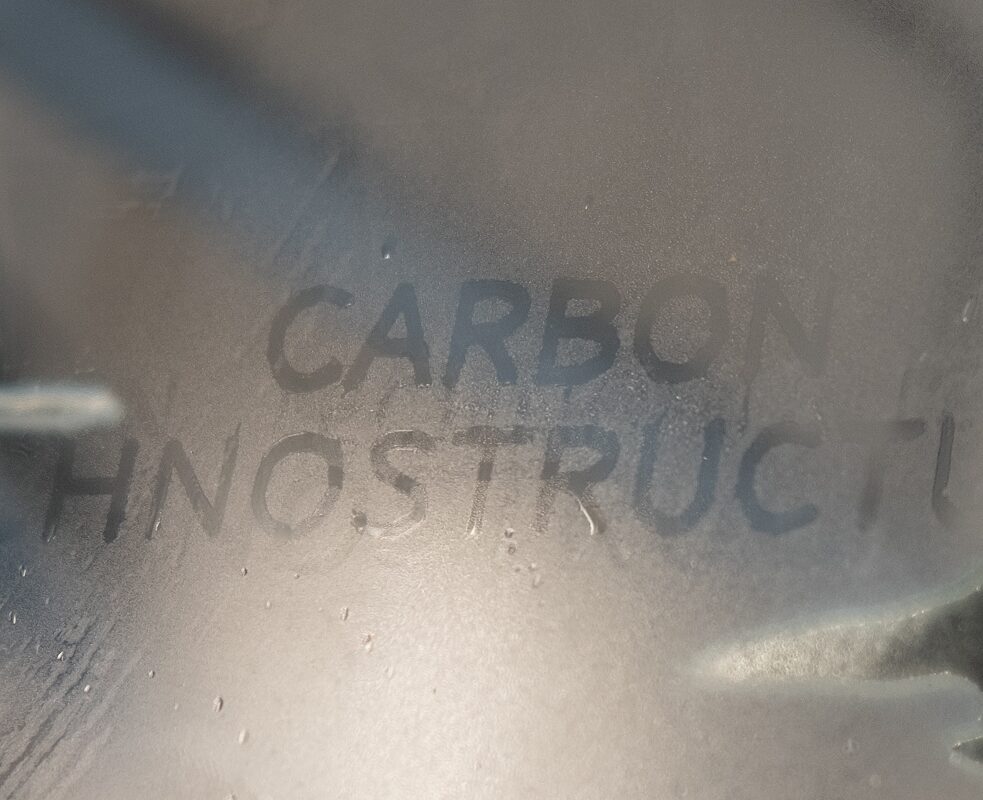Carbon Technostructures: The ecological impact of our digital actions

Cloud plotter in action, revealing the title of the research “Carbon Technostructure” from a layer of water steam | © Guillaume Slizewicz
Digital transformation requires ever more energy and resources to process increasingly complex and extensive data flows[1]. Carbon Technostructures, the collective research by Guillaume Slizewicz and Gijs de Heij, explores the dynamics of digital usage and its invisible double[2]: the energy infrastructure on which it depends. Through an online platform and a physical installation, it aims to make visible the tangible ecological impact of our digital actions, at a time when their pernicious consequences on nature is evident but remain invisible in their everyday practice.
DEPENDENCE TO ENERGY AND VISUALISATION

Carbon weight calculation of a webpage | © Guillaume Slizewicz
The Carbon Aware[4] initiative to make visible what is meant to be invisible, unfolds a pedagogical approach to the issues of carbon neutrality objectives, and shows how seemingly simple digital interactions might trigger complex systems of energy suppliers and network components. To visualise their provenience and carbon footprint, they developed a lightweight website[5] using a character grid, no images, and let displayed informations to speak for themselves—against the tide of the cloud’s[6] romantic representations.
PLOTTING ON THE CLOUD

To reconstruct a technical understanding
Although often presented as a way to reduce the repercussions of growth on the biosphere, the environmental impact of digitalisation is not limited to the use of devices and networks, but also to the embodied emissions[7] of the techno capitalist system. Carbon Technostructures provides an opportunity for collective reflection on new technologies and on the narrative imposed by neoliberal hegemony. Not aspiring to be flawless, it introduces to the broader field of digital transformation, as an attempt to reconstruct a technical understanding.
NOTES
[1] Fabrice Flipo, La Face cachée du numérique, Paris, L’Échappée, 2013[2] Fanny Lopez, À bout de Flux, Divergences Editions, 2022
[3] Le Pavillon (Namur, BE) is an exhibition, experimentation and innovation centre dedicated to digital culture.
[4] The Carbon Aware initiative is the starting phase of Carbon Technostructures, and a project in two tracks—website redesign and energy sources visualisation—about assessing the carbon impact of digital technologies.
[5] A lightweight website focuses primarily on functionality requirements, without any technological or functional surpluses. This approach reduces its energy consumption while improving performance, ethics and accessibility.
[6] The cloud is a machine and techno-capitalist system materialised by hard drives, fibre optic cables running along the ocean floor, concrete, metal and bitumen data centers and computers.
[7] The production and renewal of hardware components, electricity transmission and distribution infrastructures.
About the author:
Hugo Roger is an art director and curator based in Brussels. His writing and curatorial work examines the intersection between the individual and the collective, with a focus on heritage, representation and dialogue, aiming to initiate sustainable spaces of transmission and the re-imagining of future scenarios. He currently explores practices that unsettle historical and colonial narratives through archival research, storytelling and speculative fiction.In 2024, he obtained a postgraduate degree in Curatorial Studies from The Royal Academy of Fine Arts of Ghent (KASK). He has worked for .tiff at FOMU Antwerp, is assistant-curator of the same exhibition at Brakke Grand in Amsterdam, co-curated the “Jumping Fences” residency programme at Het Paviljoen, and the collective exhibition “Grains of Sand Like Mountains” at Kunsthal Gent. He has been selected as a co-curator and mediator for the Belgian Pavilion at the 60th International Art Exhibition—La Biennale di Venezia (2024) within the framework of the Young Curators Programme. Previously, he served as an art director at Page Works studio in Brussels. He also worked as a graphic designer for Philippe Apeloig in New York City, and collaborated with Studio Lin, Small Editions, Nicole Kaack and SUN Publishing, among others.